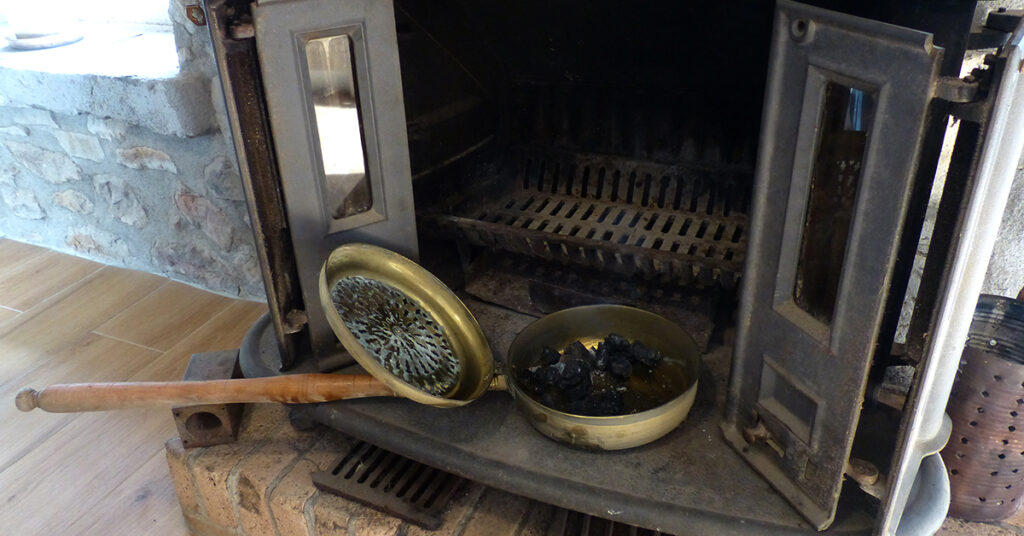Basque ethnography at a glance
The temperature and environmental conditions in our climate zone change with the seasons, and also each day, depending on whether the sun is shining or the phases of the moon. Our body cannot always adapt to those changes and needs the help of different systems to ensure our body temperature stays as constant as possible.
Fire is our main ally to overcome the cold. The hearth needs to be constantly stocked with wood to keep it alight during the long winter nights; something we cannot do while we are asleep. The kitchen (sukalde, fire zone) has always kept the areas near it warm; the problem is how to heat the rest of the house and the bedrooms can be very cold at night during the winter months.
Our ancestors resorted to using the heat of the livestock to warm the bedrooms; the largest animals would be put in a special indoor enclosure known as “stable” (korta) on the ground floor of the farmhouse. The rooms were on the first floor, which meant that the baserritarras (farm dwellers) benefitted from the heat rising up from the stable below.
Another system to be comfortable and able to sleep on the coldest nights was sought for the buildings where the animal heat was not sufficient or for those that did not have indoor stables. Utensils began to be placed in the bed to relieve the feeling of damp and cold at bedtime.
The heater known as a “brazier” (braserue) was widely used; it consisted of a recipient similar to a frying plan, which was slid between the sheets of the beds to warm them and made the heat spread uniformly. It had a perforated lid which released the heat of the embers and a long handle. The recipient was made out of copper or tin and the handle out of metal or wood. The handle was used to easily move the brazier around the bed to make sure the heat was evenly distributed. Embers from the kitchen were placed in the brazier or, sometimes, hot stones or bits of brick heated in the fire were used. Those heaters were therefore usually kept near to the fireplace during the day and were hung on the wall thanks to a hole in the handle.
As many older people rightly say, “the cold rises up from your feet” as much of our body heat is lost and gained through them. So, people who did not have a brazier used something much simpler to keep warm, a simple solid brick, previously heated in the oven or in the kitchen hearth, was placed at the bottom of the bed. The brick was wrapped in fabric or a cloth, so as not to dirty the sheets and keep the heat for as long a time as possible.
In the 19th century, very hot or boiling water, tipped into an earthenware, glass or metal recipient, which was closed with a cork or ceramic stopper, began to be used. When the recipient was not metal, a long nail was put in to absorb part of the heat and to stop the pot from breaking when the water was poured in. The container would also be wrapped in fabric or cloth and then used in the same way as the solid brick.
These have been some of the methods used by our ancestors to heat their bedrooms and beds, before our homes began to be kept warm by systems using fossil fuels or electricity. Some more modern versions of the systems described, such as the hot water bottle or electric blanket, are still used, but they are not common. In any event, they all had and have a single goal: to make sure we are warm enough at bedtime so we can get a good night’s sleep in the depth of winter.
Zuriñe Goitia – Anthropologist


